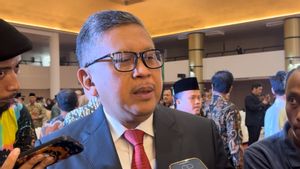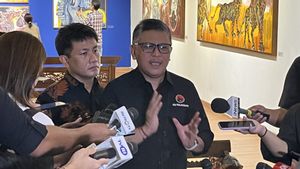JAKARTA - The Environment Agency said that DKI Jakarta now has 23 low-cost air sensors and five additional reference monitoring stations to obtain valid and quality data related to pollution.
"With more data, the government can be more precise in identifying sources of pollution, communicating it to the public and opening wider access to information disclosure," said Deputy Head of the DKI Jakarta Provincial Environment Agency Sarjoko in Jakarta, Antara, Tuesday, May 14.
Sarjoko said that building air quality and health data integration has been a priority for the DKI Jakarta Provincial Government since the last few months.
This is evidenced, one of which is through the integration of the Blue Jaya Eagle System and the 2-wheeled and 4-wheeled Vehicle Emission Test system belonging to the KIR of the Transportation Service.
According to him, this synergy allows the government to intervene in emissions directly from the source and encourages compliance with motor vehicle exhaust emissions to meet standards.
In addition, the government is also developing an early warning system for the risk of exposure to air pollution, reviewing parking disincentive schemes, improving transportation service management and implementing the concept of a low-integrated emission area.
In addition, the community is also involved in helping reduce air pollution, one of which is through an educational campaign titled “ Clean Air for Jakarta ” which is held by the Environmental Service together with the Health Service and non-governmental organizations (NGOs).
This campaign was held in the Pandawa Tanah Tinggi Child Friendly Integrated Public Space (RPTRA), Central Jakarta this Tuesday and at RPTRA Si Pitung Marunda, North Jakarta on Monday (13/5).
This activity is one series of emergency response strategies to anticipate the potential for decreasing air quality in the dry season.
Deputy Head of the DKI Jakarta Provincial Health Office, dr. Dwi Oktavia Handayani said air pollution control has many dimensions and the upstream handling of emission sources must be in line with downstream handling.
At the site level, community action can be carried out by reducing emissions production from small behavior. For example, choosing to walk to a shop or nearest market from home.
In addition, take waste without burning, wear masks outside the house when the air quality decreases, use public transportation and carry out private vehicle emission tests.
SEE ALSO:
The English, Chinese, Japanese, Arabic, and French versions are automatically generated by the AI. So there may still be inaccuracies in translating, please always see Indonesian as our main language. (system supported by DigitalSiber.id)













